Little known outside the region, two Cleveland commuter trains closed out passenger rail service to the giant Cleveland Union Terminal. Shortly after 5 p.m. on a January day in 1977, passengers descended the only stairwell still open to track level at CUT (see Spring 2005). A single lightbulb revealed peeling paint.
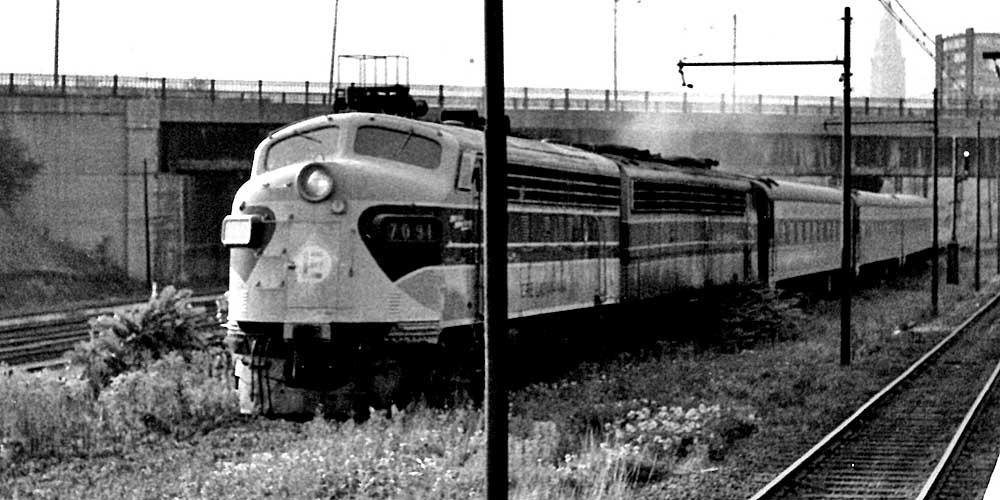
Wearing white shirts, navy blue jackets and caps, and maroon neckties with steam locomotive tie clips, conductors James Anderson and Jim Schiffauer greeted passengers by name as they boarded CUT’s last passenger train and Ohio’s last commuter train.
Shortly after No. 28 departed at 5:25 p.m., four men seated in a coach placed a cardboard slab on their laps to start “the oldest floating bridge game in the world.” It had been going on for 30 years and when a player retired another passenger always took his place.
The 60 or so passengers might not have known each other’s names but they recognized one another. Such was the family atmosphere aboard the train. Most had disembarked by Aurora, 24 miles east from CUT. Few rode to the eastern terminus in Youngstown.
Nos. 28 and 29 were the last remnant of an Erie Railroad route between Cleveland and Pittsburgh that hosted 20 daily passenger trains a day in the 1920s, conveyed east of Youngstown by the Pittsburgh & Lake Erie Railroad. The Steel Kings made the trip in 1 hour, 40 minutes. The Oct. 1, 1955, opening of the Ohio Turnpike eroded ridership and the last Steel Kings ended in early 1964, leaving only the 66-mile Cleveland-Youngstown weekday commuter trains.
Cleveland had been the Erie’s headquarters since Mantis J. and Oris P. Van Sweringen gained control of it in 1929, as part of their ownership that included Chesapeake & Ohio, Nickel Plate, and Pere Marquette. The Erie headquarters lasted until Erie-Lackawanna merged with Conrail in 1976, helping keep Nos. 28 and 29 running because many passengers worked in the building.
In 1970, EL sought Ohio Public Utilities Commission approval to quadruple the fares. The Commission sat on the request for nearly two years before approving it. EL acknowledged the fare hike might result in lost patronage but claimed the existing fares were unreasonably low.
In early 1973, a federal judge allowed EL, now in bankruptcy proceedings, to seek PUCO approval to discontinue trains 28 and 29, saying they averaged 103 riders per trip and were losing $600 a day. During a PUCO hearing, an EL attorney said half the ridership had evaporated since 1970. About 100 attended the hearing to protest the discontinuance. When the PUCO didn’t act immediately, EL received approval from a federal judge to end the trains effective Feb. 15, 1974. But in January, PUCO ordered EL to continue the trains, saying the $300,000 losses in the previous two years were less than 1% of the railroad’s deficit.
The judge who had said the trains could be discontinued stayed his order indefinitely until EL received regulatory approval to discontinue the trains or a reorganization in bankruptcy court allowed it. A federal appeals court spurned EL’s request to end the trains.
Conrail took over Nos. 28 and 29 and funded them in part with a $23.4 million grant from the Urban Mass Transportation Administration to cover the costs of commuter trains in various areas. Conrail hoped to find a state or local agency to fund the Cleveland-Youngstown service.
No Ohio agency wanted to do that. The Ohio Rail Transportation Authority voted 4-1 against seeking a $239,685 federal grant to fund the trains through March 31, 1977. Members said the grant would involve committing state funds and the Ohio constitution prohibited using state money for railroads.
Conrail posted 30-day discontinuance notices on Nov. 16, 1976, citing a federal law enabling it to discontinue unprofitable commuter trains absent a subsidy. The two trains were losing $2,300 a day. The trains made their final trips on Jan. 14, 1977. Before No. 28 departed for the last time, a federal judge in Cleveland dismissed a lawsuit brought by passengers seeking a temporary order to keep the trains running.
It was standing-room only aboard No. 28, with engineer J.P. Selfarth at the controls of E8 No. 4014, which, like the three passenger cars it was pulling, still wore the EL yellow, maroon, and gray livery. The stairway leading to the tracks at CUT had been freshly painted.
In the last car, passengers ate cold cuts and drank champagne, reminiscent of a once common practice on Friday afternoons. The longest floating bridge game played its last hands. Passengers told stories of friends who had retired and spoke of Christmas parties aboard the train. And they bid each other farewell.
“Good-bye, I’ll see you again,” one woman said. “But I don’t know when.”






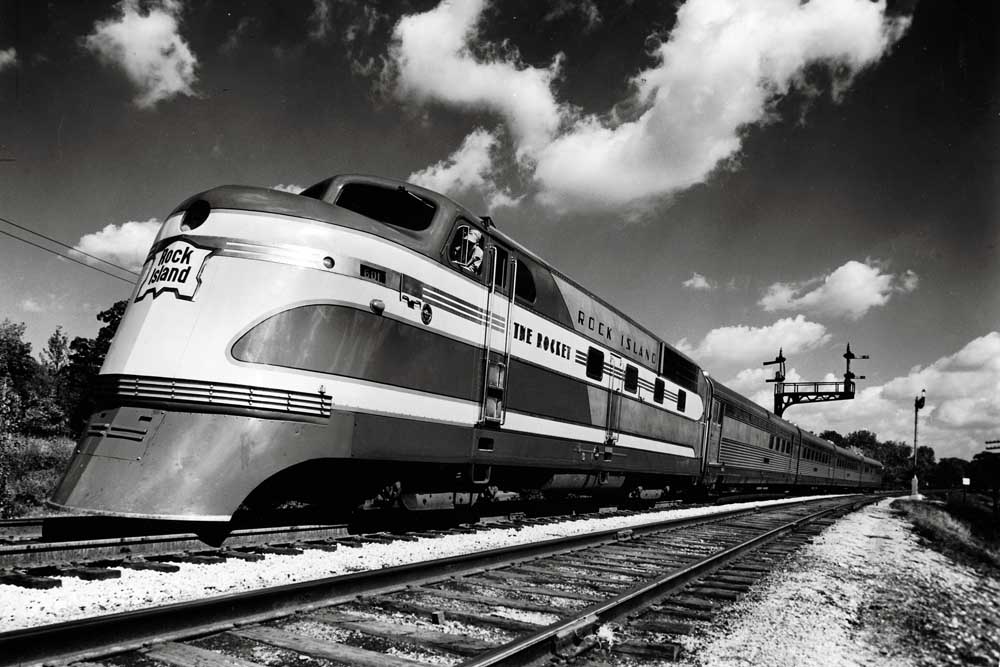
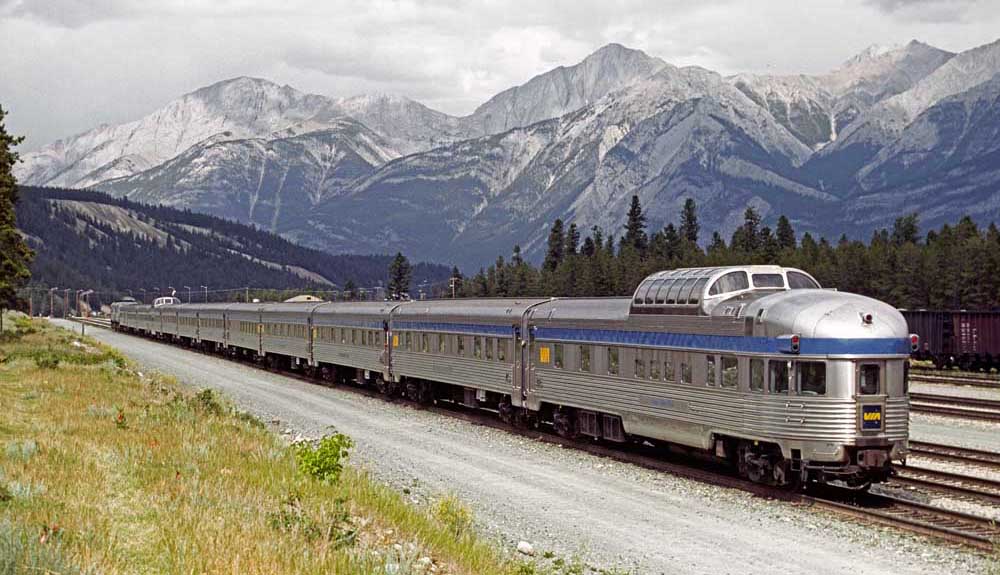
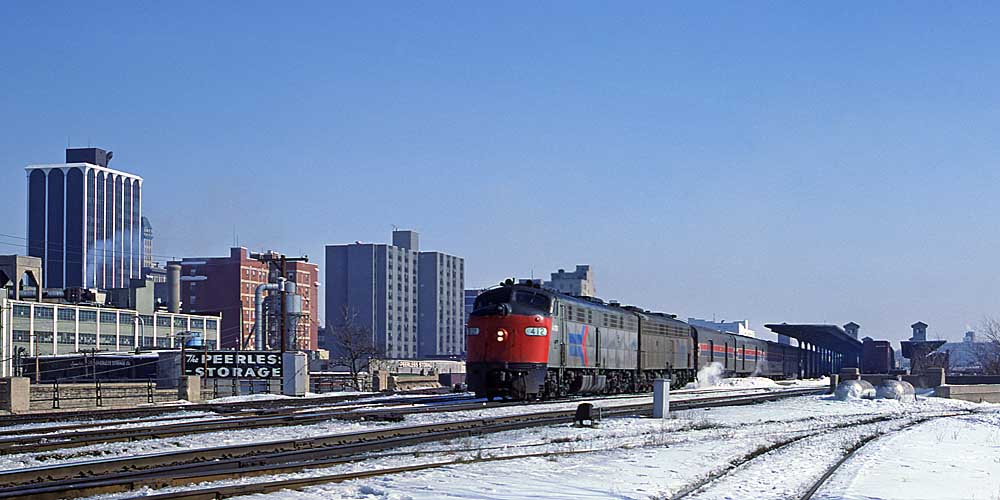
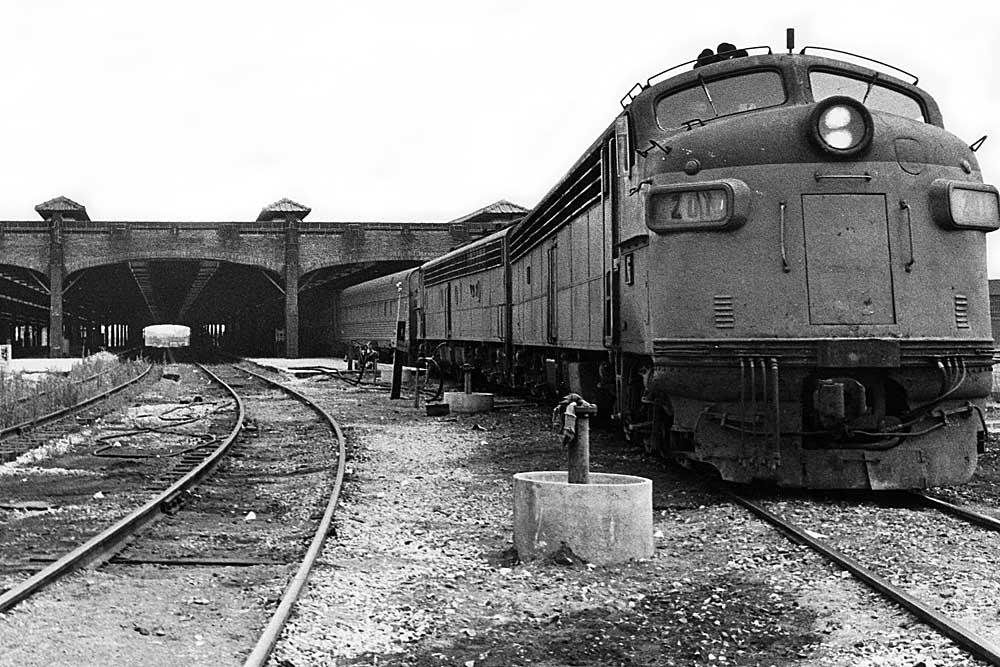




Great story and photos